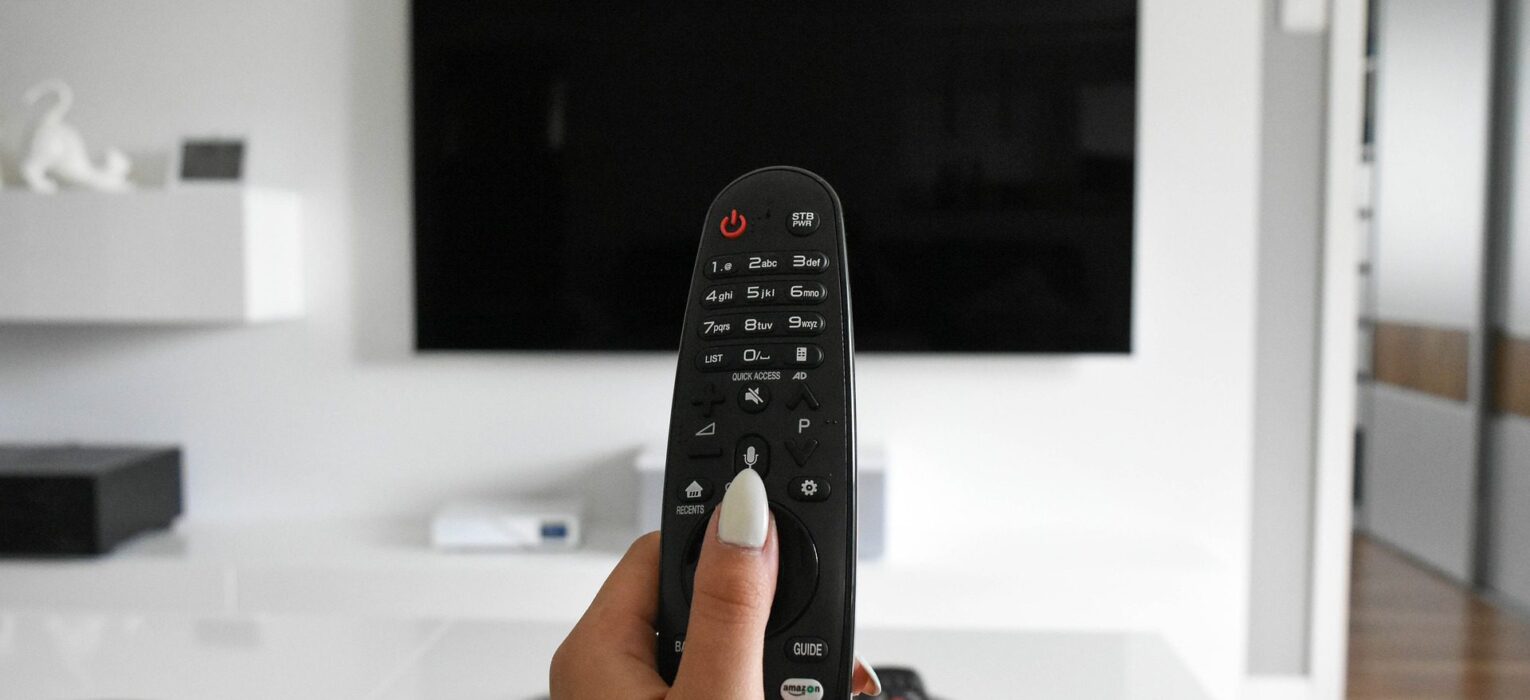HOW WE WATCH TV – FROM COLLECTIVE EXPERIENCE TO SOLO BINGE
Have you ever lived without a television? Nowadays, it seems almost self-evident that we would have a TV in our homes, or at least access to a high definition screen that allows us to watch all the videos, movies and TV series that we want, whenever and wherever. This blog explores how people have watched TV from the 20th century to today: from collective living room entertainment to more personal experiences on a small screen in the palm of your hand.
The first TV broadcasts
The digitisation of our society has led to a significant change in how we consume audiovisual content. “Watching television” can have many different meanings these days and mean different things to different people. For some people, it means watching a talk show on a big screen with the whole family in the living room. For others it might describe watching their favourite TV series in one go, by themselves, on a laptop or smartphone.
Although the television had been invented earlier, the first experiments with TV broadcasting started to emerge in the late 1920s and early 1930s.
For quite some years, though, the concept of broadcasting remained novel to many people.
All major events in the world could now be captured audiovisually and broadcast to people’s TV sets. Around this time television started to replace radio as the dominant medium in people’s daily lives. This led to a new style of home entertainment. Families and friends would gather in front of the little square box in someone’s living room and enjoy an hour of television together.
Colour TVs and more channels
In the early days of broadcasting, “watching TV” simply meant tuning in to the daily or weekly show that was aired on a specific day and hour of the week, on the one available channel. Over the years, however, the world of television would see many changes. During the 1960s and 1970s, broadcasters upgraded their black-and-white transmissions to colour.
More channels and TV shows slowly began to emerge. People could now choose from a variety of different TV programmes that aired on different broadcasting channels and different times during the day. Due to the rise of VHS tapes in the 1980s, it became possible to record a specific programme from your television onto a tape, allowing you to watch your favourite TV show at a time of your choosing.
TV in the palm of our hands
The early 21st century saw another important technological revolution in the world of television: the end of analogue viewing and the rise of digital television.
The digital revolution and the commercialisation of the internet massively changed how we watch television. The digitalisation of TV allowed people to watch hundreds of channels from all over the world, offered on demand and in ever higher quality. Moreover, the rise of laptops, smartphones and tablets allows people to watch their favourite programmes on many other devices besides just their TV set. Besides gathering together with friends and family in front of the big screen, people now carry around their own private TVs wherever they are.
With the development of video and streaming platforms such as Youtube, Netflix and Amazon Prime, people seem to be focused on their personal little screens more than ever before. Terms like binge-watching have entered our language, indicating how people’s TV watching patterns have drastically changed with time. The act of “watching TV” does not only reflect a collective, scheduled moment of home entertainment anymore. Now it includes watching all 24 episodes of that newest Netflix series in one go, or watching your all-time favourite film whilst travelling by train.
Watching television has become a much more private experience that can be enjoyed completely by yourself, wherever you want, whenever you want. Watching movies and TV on the screen of your smartphone would have been unthinkable during the early days of television… or would it?
Autor: Rebecca Haselhoff, Netherlands Institute for Sound and Vision
Źródło artykułu: Europeana Foundation
Licencja: CC BY-SA 4.0
Definicje i przykłady zdań: Cambridge Dictionary
VOCABULARY
self-evident /ˌselfˈev.ɪ.dənt/ – clear or obvious without needing any proof or explanation;
oczywisty, ewidentny
digitisation /ˌdɪdʒɪtaɪˈzeɪʃn/ – putting information into the form of a series of the numbers 0 and 1, usually so that it can be understood and used by a computer;
cyfryzacja
significant /sɪɡˈnɪf.ɪ.kənt/ – important or noticeable;
znaczący, istotny
in one go / ɪn wʌn ˈɡəʊ / – all together on one occasion;
za jednym zamachem
broadcasting /ˈbrɔːdˌkɑː.stɪŋ/ – the activity or business of sending out programmes on television or radio;
transmisja, nadawanie programów
emerge /ɪˈmɜːdʒ/ – to appear by coming out of something or out from behind something;
wyłaniać, pojawiać się
capture /ˈkæp.tʃər/ – to record or take a picture of something using a camera;
uchwycić (np. moment) w filmie / na zdjęciu
novel /ˈnɒv.əl/ – new and original, not like anything seen before;
nowatorski, nowy
medium /ˈmiː.di.əm/ – a method or way of expressing something;
środek komunikacji, przekazu
gather /ˈɡæð.ər/ – come together in a group;
zbierać, gromadzić się
tune in /tʃuːn ɪn / – to watch or listen to a particular television or radio programme or station;
włączać odbiornik na daną stację
air /eər/ – to broadcast something or be broadcast on radio or television;
nadawać w radiu lub telewizji
upgrade /ʌpˈɡreɪd/ – to improve the quality or usefulness of something, or change it for something newer or of a better standard;
unowocześniać, podnosić jakość/standard
variety /vəˈraɪ.ə.ti/ – many different types of things or people;
różnorodność
due to sth/sb / djuː tu ˈsʌmθɪŋ ˈsʌmbədi / – because of sth/sb;
dzięki czemuś/komuś, z powodu / ze względu na coś
rise /raɪz/ – the process of becoming very famous, powerful, or popular;
pojawienie się, rozpowszechnienie
analogue /ˈænəlɒɡ/ – using a system in which information, such as sound or images, is stored or sent in a continuously changing form, such as electrical signals, radio waves, or film;
analogowy
on demand / ɒn dɪˈmɑːnd / – at any time that someone wants or needs something;
na żądanie
binge-watch /ˈbɪndʒ ˌwɒtʃ/ – to watch several episodes of a television series or programme, one after another;
oglądać serial lub program po kilka odcinków z rzędu lub cały sezon na raz
pattern /ˈpæt.ən/ – a particular way in which something is done, is organized, or happens;
wzór, schemat, zwyczaj
reflect /rɪˈflekt/ – to show, express, or be a sign of something;
odzwierciedlać
all-time /ˌɔːlˈtaɪm/ – the highest, lowest, best, etc. that something has ever been;
absolutny, wszech czasów
unthinkable /ʌnˈθɪŋ.kə.bəl/ – so shocking that it cannot be imagined as possible;
nieprawdopodobny, nie do pomyślenia




